The Red Cross and FEMA now recommend having at least a 2-week food and water supply at home. They recommend non-perishable foods with long shelf lives.
This long-term food storage list of items with long shelf lives — most of which can be found at your local supermarket — is an excellent place to get started.
See also: Foods which don’t require refrigeration.
Table Of Contents
- Food Storage List of Long Shelf Life Foods
- 4. Dehydrated Fruits and Veggies
- 5. Jerky
- 6. Dried Beans
- 7. Jarred Food (Commercially-Made)
- 8. Home Canned Food
- 9. Pasta
- 10. White Rice
- 11. Whole Grains
- 12. Seeds
- 13. Nuts
- 14. Powdered Milk
- 15. Salt and Bouillon
- 16. Instant Mashed Potatoes
- 17. Cocoa and Cacao Powder
- 18. Flour
- 19. Cooking Oils
- 20. Herbs and Spices
- 21. Crackers
- 22. Jell-O Mix
- 23. Vinegar
- 24. Some Condiments
- 25. Baking Soda, Powder, and Yeast
- 26. Instant Coffee
- Before You Begin Stockpiling these Foods
Food Storage List of Long Shelf Life Foods
1. Commercially Canned Foods
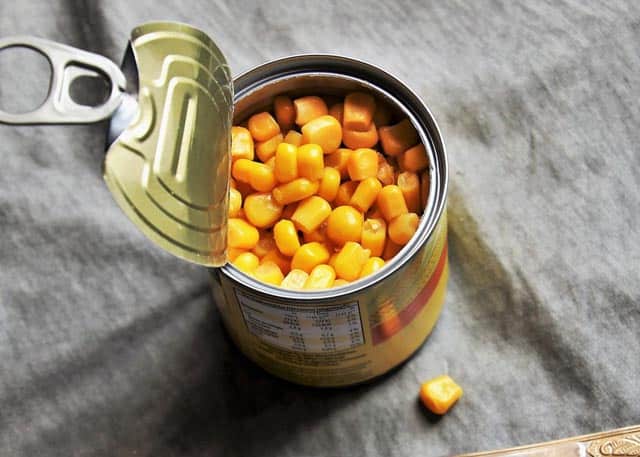
Canned foods are the best way to go for people just getting started with emergency preparedness. You can get them in the supermarket; they won’t break like glass jars, and a huge variety can be bought in bulk.
Canned products do have a “use by” date on them. However, studies have shown that canned foods are good for decades and potentially forever. They might have some nutrient breakdown or get mushy, but they will still be stable and safe to eat. Learn more about canned food shelf life here.
Canned foods aren’t perfect for emergency preparedness, though. They are usually loaded with sodium or sugars. And a lot of canned foods taste gross. So, try to include other foods in your stockpile as well.
2. Sugar, Honey, and Other Sugars
Archaeologists have found honey in Egyptian pyramids that are 3,000 years old and still edible. Likewise, refined sugar can last forever. It might become rock-hard or lumpy but will still be edible.
Read:
Here’s what you can expect of shelf life from sugars:
- Maple syrup: About two years in an unopened glass jar.
- Corn syrup: Forever shelf life, though the color might change.
- Molasses: Last 10 years in a sealed, unopened jar in the pantry. Once opened, it will last 1-5 years in the pantry.
- Powdered sugar: Forever shelf life
- Stevia: About 4 years
3. Freeze Dried Foods
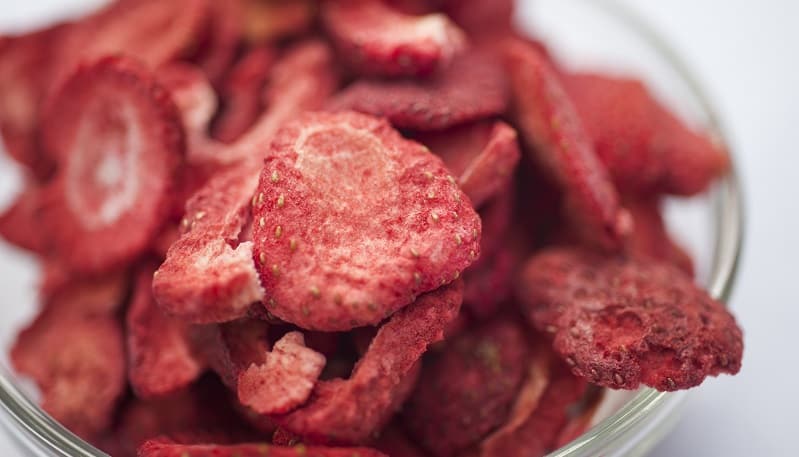
Freeze drying is when the moisture is removed from food while leaving its nutrients intact. The resulting foods are delicious and crisp. You can eat them as-is or soak them in water to rehydrate.
All sorts of foods can be freeze-dried. These include meat, cheese, dairy, fruits, veggies, and even entire meals.
Almost all the “emergency food” sold is freeze-dried. When packaged properly (in an airtight container with oxygen absorbers), freeze-dried foods can last 25+ years.
Want to get freeze-dried foods? Read:
4. Dehydrated Fruits and Veggies
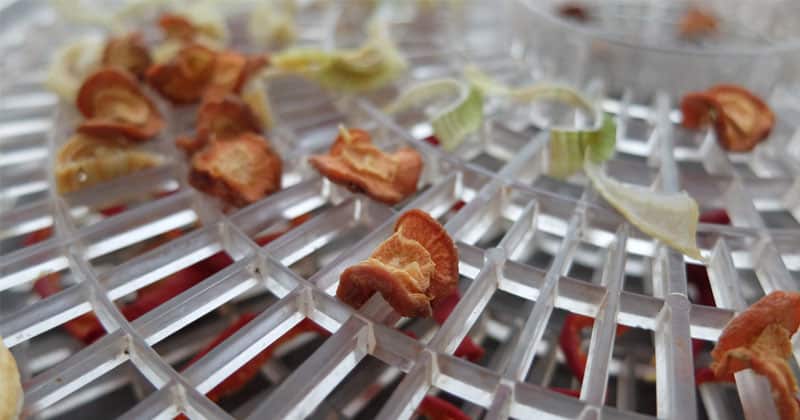
Dehydrating uses heat to remove approximately 75-95% of moisture from foods. Without moisture, the rate of spoilage decreases drastically. Dehydrated fruits can last an incredibly long time because their sugars act as a natural preservative.
Without special packaging (such as storing dried fruits or veggies in Tupperware), they will likely last 6 months to 1 year. If you take the extra step of packaging them in Mylar bags with oxygen absorbers, dried foods can last 5-15 years. This is how emergency food brands package their dehydrated foods.
For more, read the Expert-Level Guide to Dehydrating Every Type of Food
5. Jerky
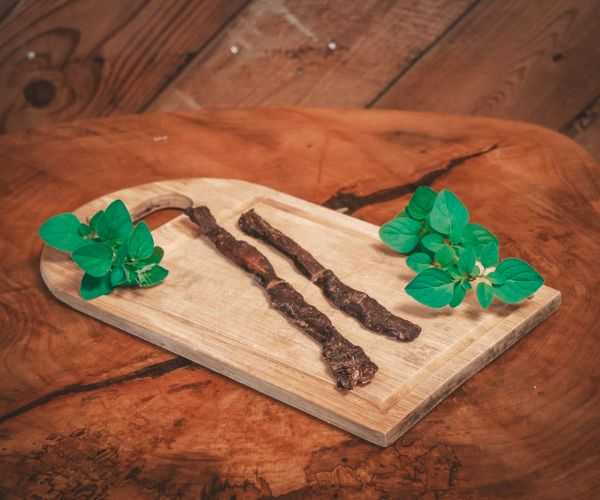
Jerky is also made with a dehydrator. However, dehydrating at home is trickier because the temperature must be high enough to kill bacteria.
The jerky you buy in the supermarket can last 1-2 years unopened in your pantry.
With homemade jerky, the shelf life is much shorter: anywhere from 1 week to 4 months. The variation in shelf life depends on how much fat is in the meat, storage conditions, and the amount of moisture remaining in the jerky.
Read: How to store beef jerky long term
6. Dried Beans
USAID says that dry beans have a shelf life of at least 1 year when stored in a cool, dry place but can last indefinitely. Beans will start to lose vitamins at around 2-3 years. But, so long as they stay dry and don’t begin to grow mold, they will still be fine to eat.
Just remember that dry beans take a long time to cook. If you plan on eating them during an emergency, make sure you have a way to cook them.
Read how to store beans for the long term.
7. Jarred Food (Commercially-Made)
The food you buy in jars in the supermarket is preserved by canning. It’s the same method that preserves food in cans.
In general, food in cans will last longer than in jars. Jars are more likely to have issues with their seals, breakage, or deterioration from light. However, you can still expect jarred food to last at least five years.
Remember that the “Best By” or “Best Before” date is not a safety date. It’s the manufacturer’s estimate of how long the food will remain at peak quality.
Here are just some jarred ingredients to consider for your emergency stockpile:
- Jams
- Applesauce
- Pickles
- Peppers
- Pasta sauce
- Baby food
8. Home Canned Food
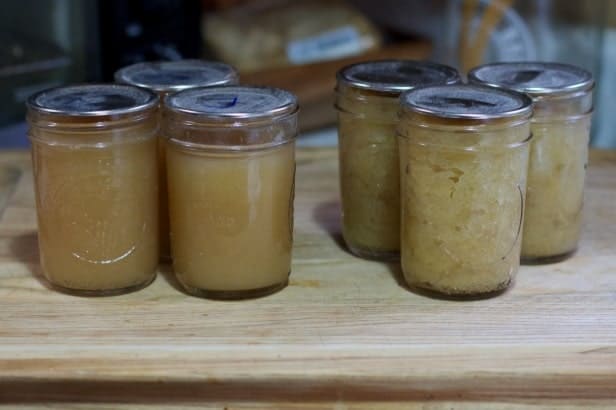
Canning is a way to preserve food at home, and it is pretty simple with a good pressure canner. Home-canned foods won’t last as long as commercially canned ones, but they can still last 2-5 years.
9. Pasta
Pasta generally has a “best by” date of 1-2 years. It will easily last 2 years past this date in your pantry without any special storage. Pasta will last 20-30 years in Mylar bags with oxygen absorbers!
Read more about how to store dry pasta.
10. White Rice
White rice can last forever if stored in a cool, dry place. This is not the case with brown rice, though.
Unlike white rice, brown rice hasn’t had its bran removed. The bran is relatively high in oils, which go rancid fairly quickly. That’s why brown rice will only last up to 1 year in your pantry.
Read how to store rice for the long term.
11. Whole Grains
Whole grains still have their outer shell (hull) intact. This acts as a natural preservative, keeping out air and light that would cause degradation. The grains with harder hulls (hard grains) will last longer than those with soft hulls (soft grains).
Like virtually every food on this long shelf life list, you should store whole grains in Mylar bags with oxygen absorbers. They will still last a long time in a sealed container in your pantry, though.
Expected shelf life in a cool, dry pantry:
- Wheat: 2 years
- Barley: 2 years
- Kamut: 2 years
- Millet: 2 years
- Rolled oats: 2 years
- Rye: 2 years
- Spelt: 2 years
- Alfalfa: 4 years
- Buckwheat: 2 years
- Quinoa: 3 years – see how to store quinoa long term
Shelf life when stored in Mylar bags with oxygen absorbers:
- Soft grains (such as barley, quinoa, and rye): 8 years
- Hard grains (such as wheat and buckwheat): 10 to 12 years
Like dry beans, whole grains can take a long time to cook. Remember to plan a way to cook without electricity for using them.
12. Seeds
Seeds are an excellent source of nutrients. They are loaded with protein, iron, magnesium, healthy fats, and many vitamins. They are also one of the foods with the longest shelf life without you having to do much of anything.
Most seeds will last 2-5 years in a cool, dry pantry. Remember that temperature matters for seed shelf life because they have natural oils that go rancid from heat. The USDA states, “Each 5.6oC. (10.08oF) drop in temperature doubles the storage life of the seeds”.
13. Nuts
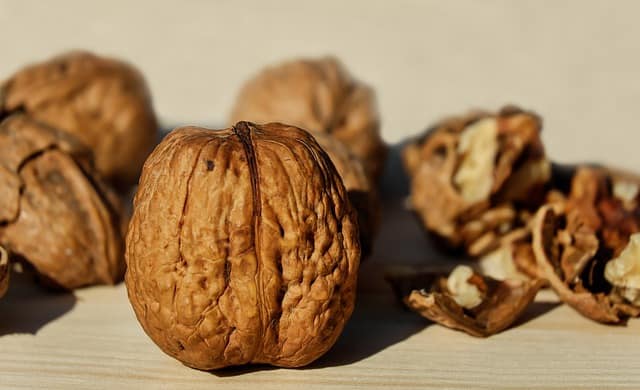
Like seeds, nuts are loaded with nutrients and naturally have a long shelf life (especially if kept in their shells).
The difference is that nuts usually have a much higher fat content than seeds. This fat will eventually go rancid, especially in hot, humid conditions. Fattier nuts like pistachios will go bad very quickly.
Because nuts are so expensive, I wouldn’t try to store them for years as part of a long-term food storage plan. However, if you keep them cool and remember to rotate them, they are a great emergency food.
Notes:
- Nuts in their shell will last 25-50% longer than shelled nuts.
- Whole nuts last approximately 50% longer than nut pieces.
- Some roasted nuts may only have ¼ of the shelf life of raw nuts.
- The shelf life of peanut butter depends on whether it is “natural” or has preservatives.
See how to store nuts long term
Shelf life of nuts in months
| In pantry at 50F | In pantry at 68F | |
|---|---|---|
| Almond, shelled | 8 | 4 |
| Almond, in shell | 16 | 6 |
| Macadamia, shelled | 12 | 5 |
| Peanut, shelled | 9 | 4 |
| Peanut, in shell | 9 | 6 |
| Pistachio, shelled | 3 | 1 |
14. Powdered Milk
Powdered milk is made by freeze-drying milk. It is then stored in sealed packaging, which prevents air or moisture from passing through.
If you keep the powdered milk in its packaging, it is a forever shelf-life food. Even after it has been opened, it will probably last 2-10 years, so long as you keep it away from humidity and heat.
Read how to store dried milk for the long term and how to make powdered milk.
15. Salt and Bouillon
Salt is a preservative for food, so it is no surprise that it lasts forever. Instead of just stockpiling salt, you might also want to stockpile bouillon in your emergency supplies. It also has a forever shelf life but has more flavor than salt alone – which can do wonders for spicing up bland emergency meals.
16. Instant Mashed Potatoes
Instant mashed potatoes are one of my favorite backpacking foods and great for emergency prep. The flakes come sealed in packages, usually with 2-4 servings per package. This makes them very easy to ration.
I also love that instant potatoes can be made with straight-up water – no heating required. If you don’t have an emergency stove or cannot use it for whatever reason (or it’s raining while camping, and you don’t feel like cooking), add water to the flakes and stir.
In sealed packaging, instant potatoes have a shelf life of 5-15 years (despite what the “Use by” date says). Once opened, you can expect them to last 6-12 months in a cool, dry place.
Read more about storing potato flakes long-term.
17. Cocoa and Cacao Powder
Unsweetened cocoa powder can last 6 years past its expiration date, though it will lose some of its taste over time. Just don’t eat it if it has a moldy, unpleasant odor.
Read: How to store cocoa powder long term
Cacao is a less-processed version of cocoa. It won’t last as long, but you can expect a shelf life of 2-3 years if stored in a cool, dry place.
18. Flour
Flour is made from ground-up grains. Because the hulls have been removed or destroyed, flours won’t last as long as whole grains. However, you can still get a very long shelf life.
White flour stored in a cool, dry pantry has a shelf life of approximately 1 to 2 years. Whole wheat flour, which contains more oils, lasts only a few months.
White and whole wheat flour will last around 10 years in a Mylar bag with oxygen absorbers.
Read how to store flour for the long term.
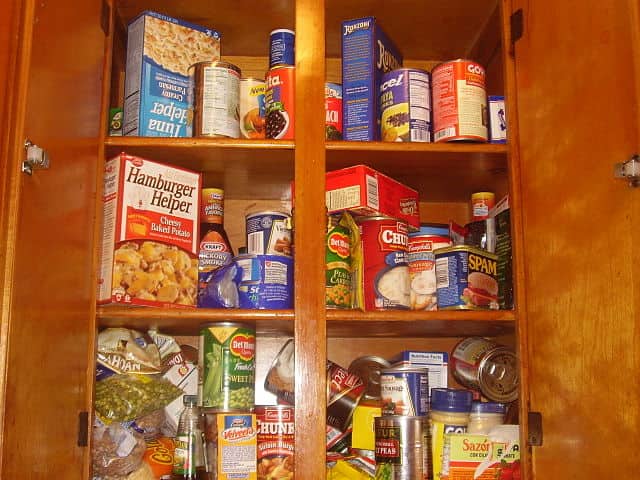
19. Cooking Oils
Most cooking oils will last at least 2 years and probably much longer in a cool place.
Heat is the biggest enemy of oils. Some oils – like coconut and olive oil – will quickly deteriorate in hot temperatures. You will notice a nasty smell. It’s better to stick with sunflower, soy, and canola oils for emergency preparedness.
20. Herbs and Spices
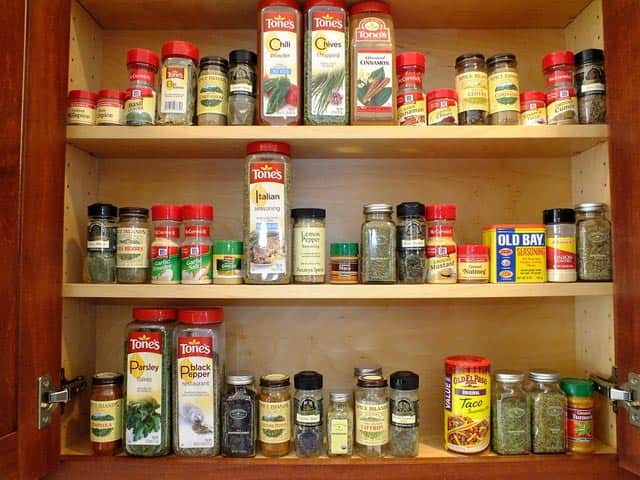
Herbs and spices are generally dehydrated. Without much moisture in them, most will last 2-5 years without special storage. These are great to include in your emergency food storage to add flavor to bland survival meals.
Read more about storing spices long term
21. Crackers
Many supermarket crackers will easily last 6-9 months in the pantry without special storage. Some types of crackers have even longer shelf lives. For example, Hardtack biscuits have a forever shelf life and were a primary food for sailors over the centuries. Read how to store crackers long term.
22. Jell-O Mix
In its unopened package, Jell-O mix can potentially last forever. Once you open the package, though, you’ll need to use the powder within 3 months.
23. Vinegar
The acidity in vinegar acts as a natural preservative, giving it a forever shelf life. You don’t need to refrigerate vinegar to get this long shelf life. Ensure you avoid vinegar with herbs, as those herbs might eventually go bad.
Also, see does vinegar go bad?
24. Some Condiments
Soy sauce and Worcestershire sauce will last forever in your pantry. Ketchup also has a long shelf life and will last around 2 years past the expiration date. So stroll down the condiments aisle and look at the shelf lives. You’ll find lots of good items for your emergency food storage.
25. Baking Soda, Powder, and Yeast
There’s not much point in stockpiling flour if you don’t have a way to make things out of it. So remember to include some baking soda, baking powder, and yeast in your emergency food stockpile.
These are all long-shelf life foods, even without special storage methods. You’ll also want to look up some recipes for solar ovens for making bread loaves or learn how to make flatbread in a skillet.
- Baking soda, unopened: Indefinitely (but will lose potency after approximately 3 years). See how to store baking soda long term.
- Baking powder, unopened: 6-12 months
- Dry yeast, unopened: 2-4 years past its expiration date. See how to store dry yeast long term.
26. Instant Coffee
Coffee isn’t a food, but many people wouldn’t want to live without it. The good news is that instant coffee (made by freeze-drying) has a forever shelf life.
Read how to store coffee long-term.
Before You Begin Stockpiling these Foods
All of these foods can last a very long time. Some even have shelf lives of “forever.” However, that doesn’t necessarily mean they will last through a disaster. Nor does it mean you’ll be able to eat them during a disaster.
For example:
- Honey lasts forever. But it will be useless if you store it in a glass jar that is smashed during a hurricane.
- Pasta can last 5+ years but is useless if you don’t have water and an emergency stove for cooking it.
- Dehydrated foods don’t require cooking but will be useless if rodents or pests get at them
Making an emergency food stockpile requires careful planning. You’ll need to consider things like:
- Where will you keep your emergency foods
- How will you package them
- Nutritional value
- Ways to cook foods without power
- Water required for cooking food
We discuss these things in our mini eBook guide, How to Build Your 30-Day Emergency Food Supply.



Very Good!!
The numbers you show are about what I’ve found over the last 20 years also.
Unknown to almost everybody (but me!) ethyl alcohol , about 3T to a 5 gal bucket, in flour and grains, then close, extends the life several years,
That’s a cool trick with the ethyl alcohol. I’ve never heard of that one.
Thanks. A well written article. I’ll be tweaking my storage of emergency food just a bit with this new information.
Mmmmm. Protein marshmallows.
Thanks for the tip on the insect eggs, I nearly forgot. Once when I was a kid I made a packet of hot chocolate, in which I discovered (after drinking half of it) that what I thought were marshmallows were actually insect larvae.